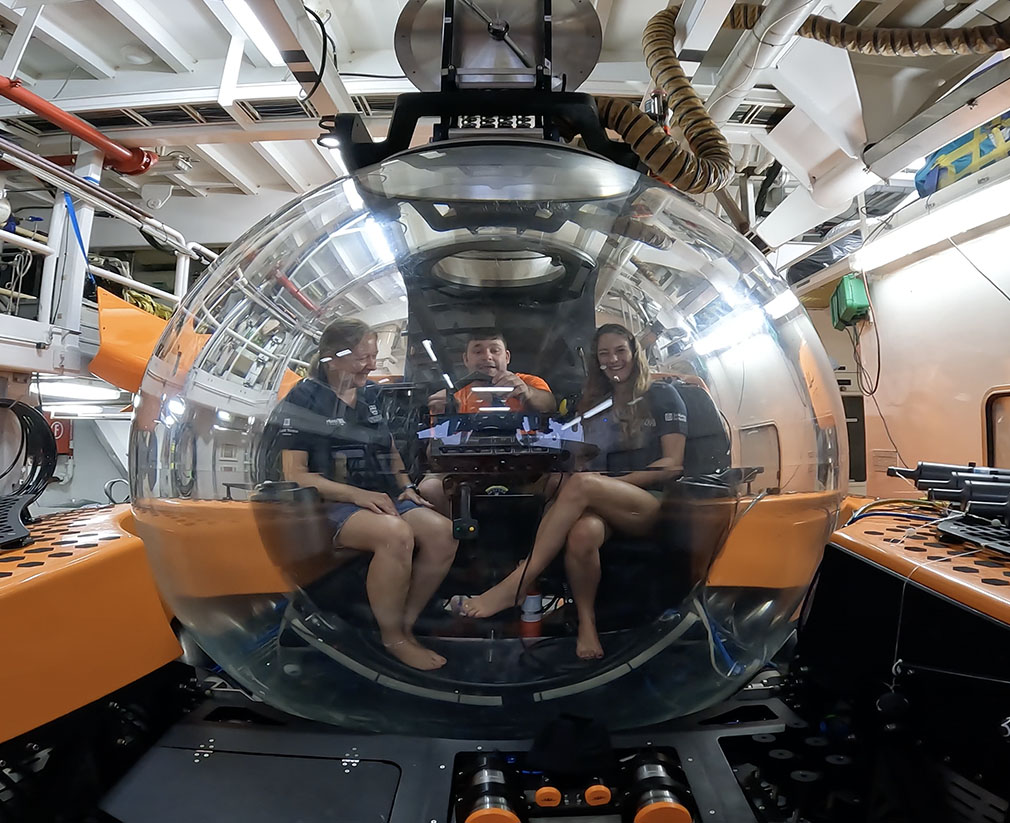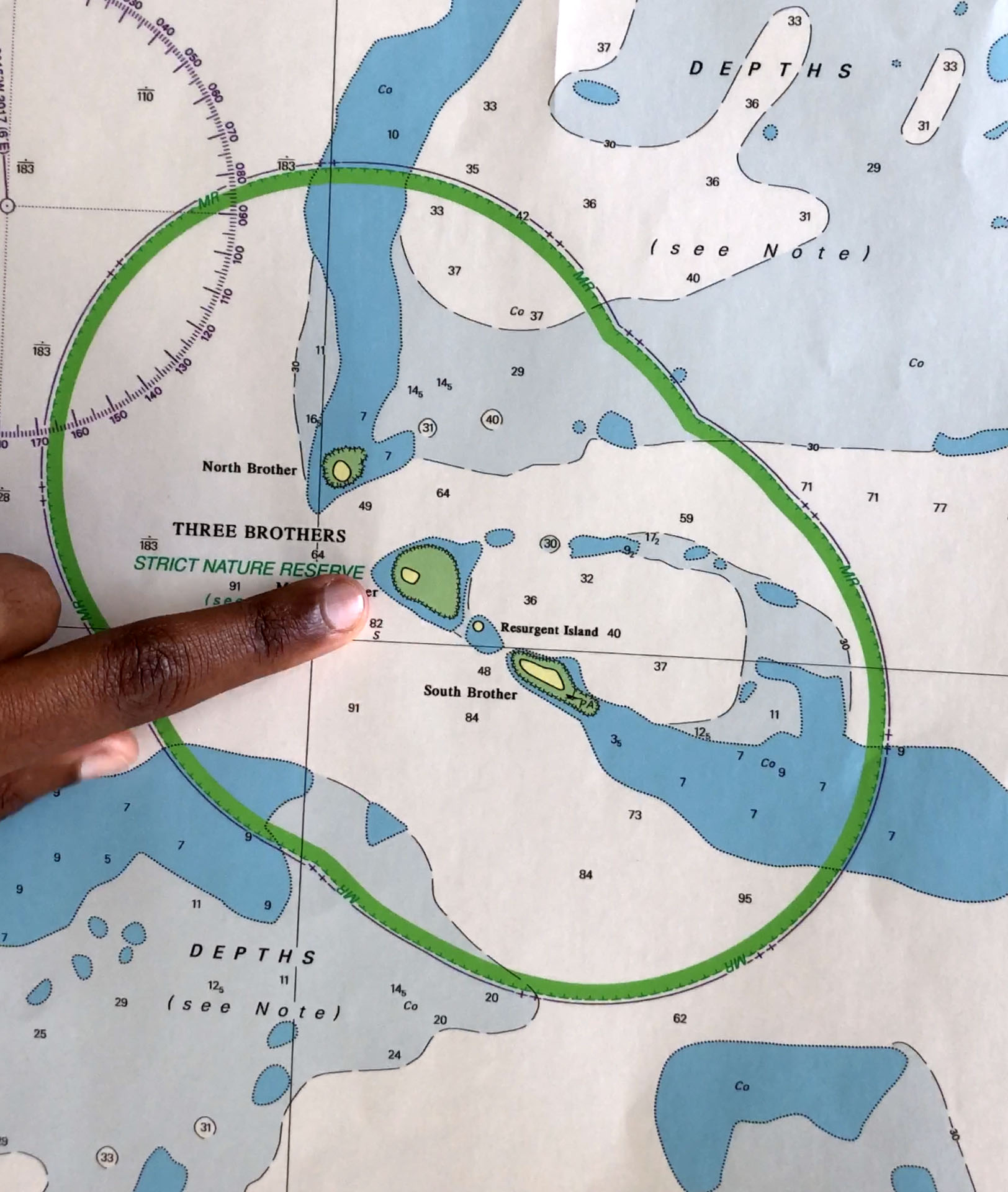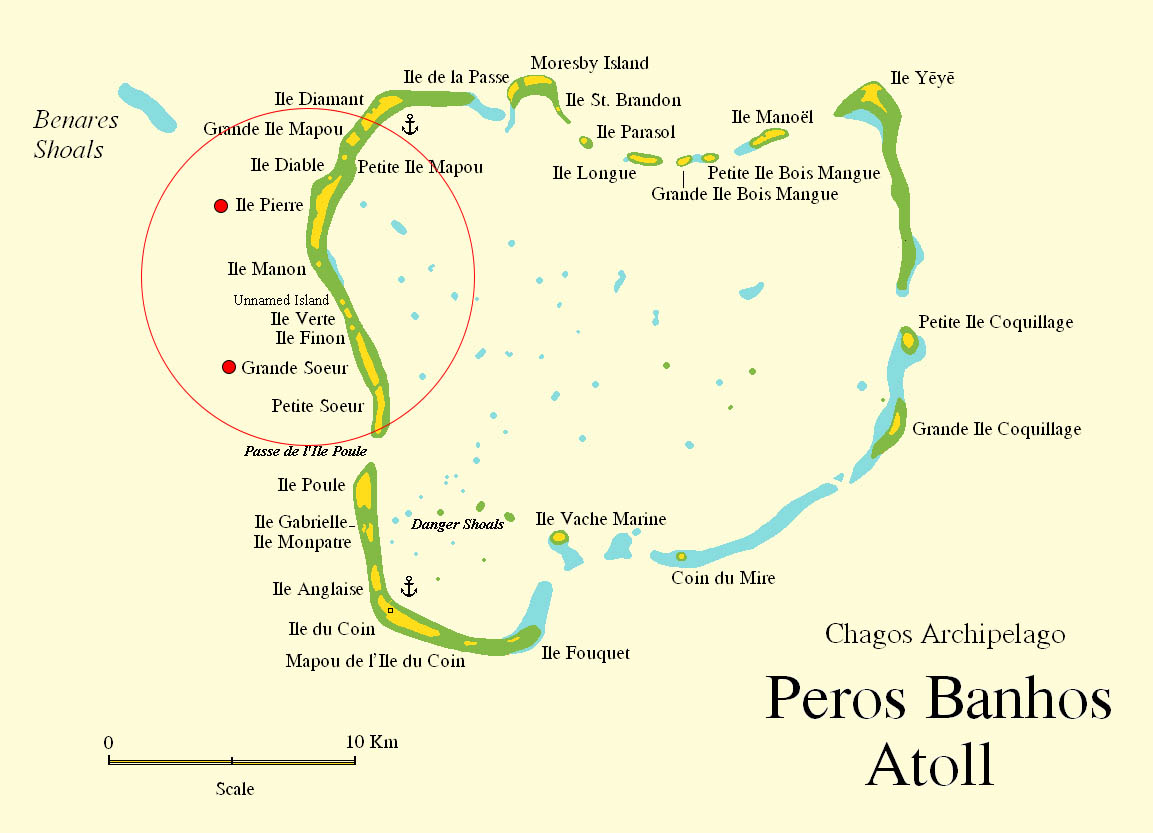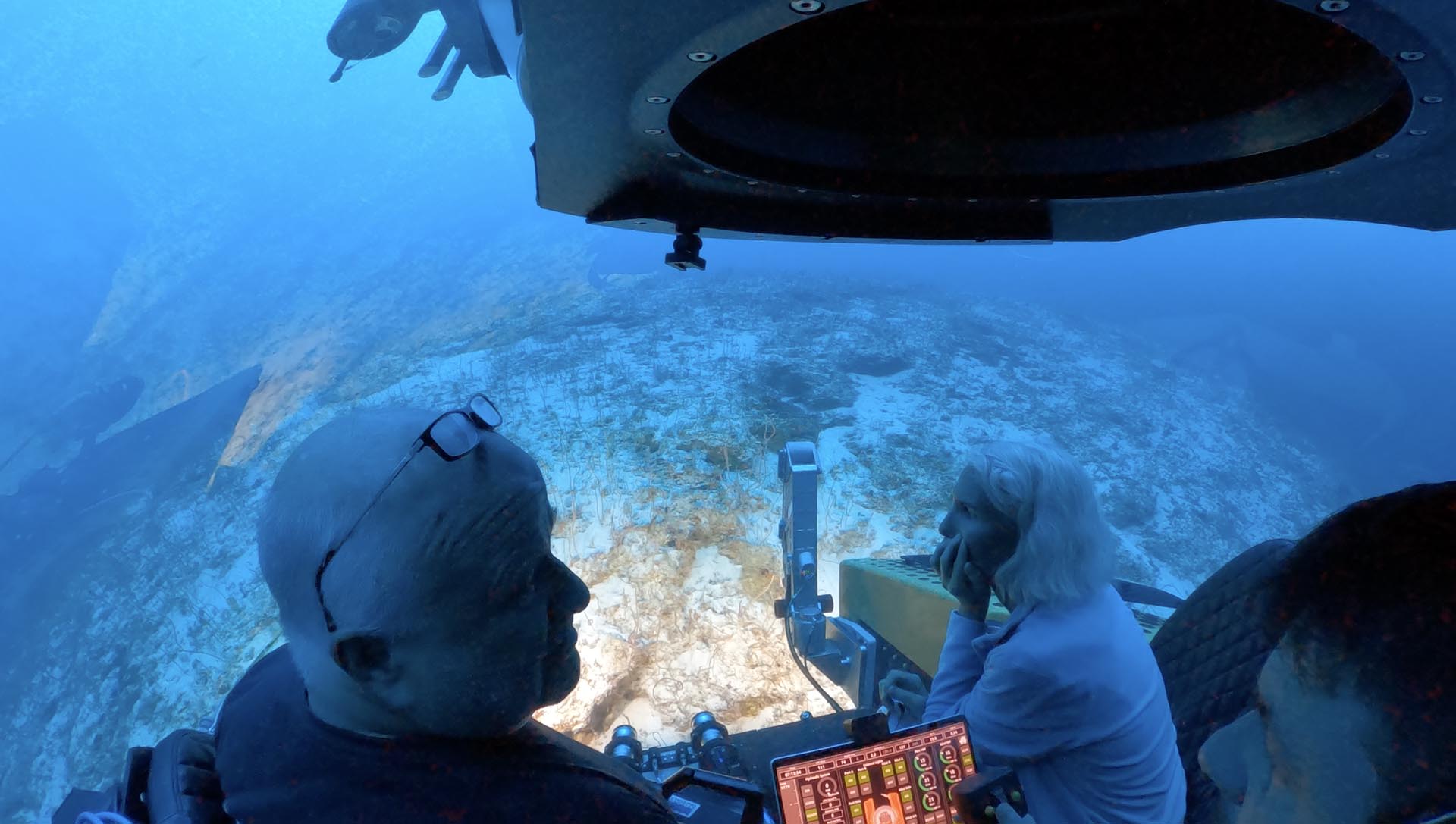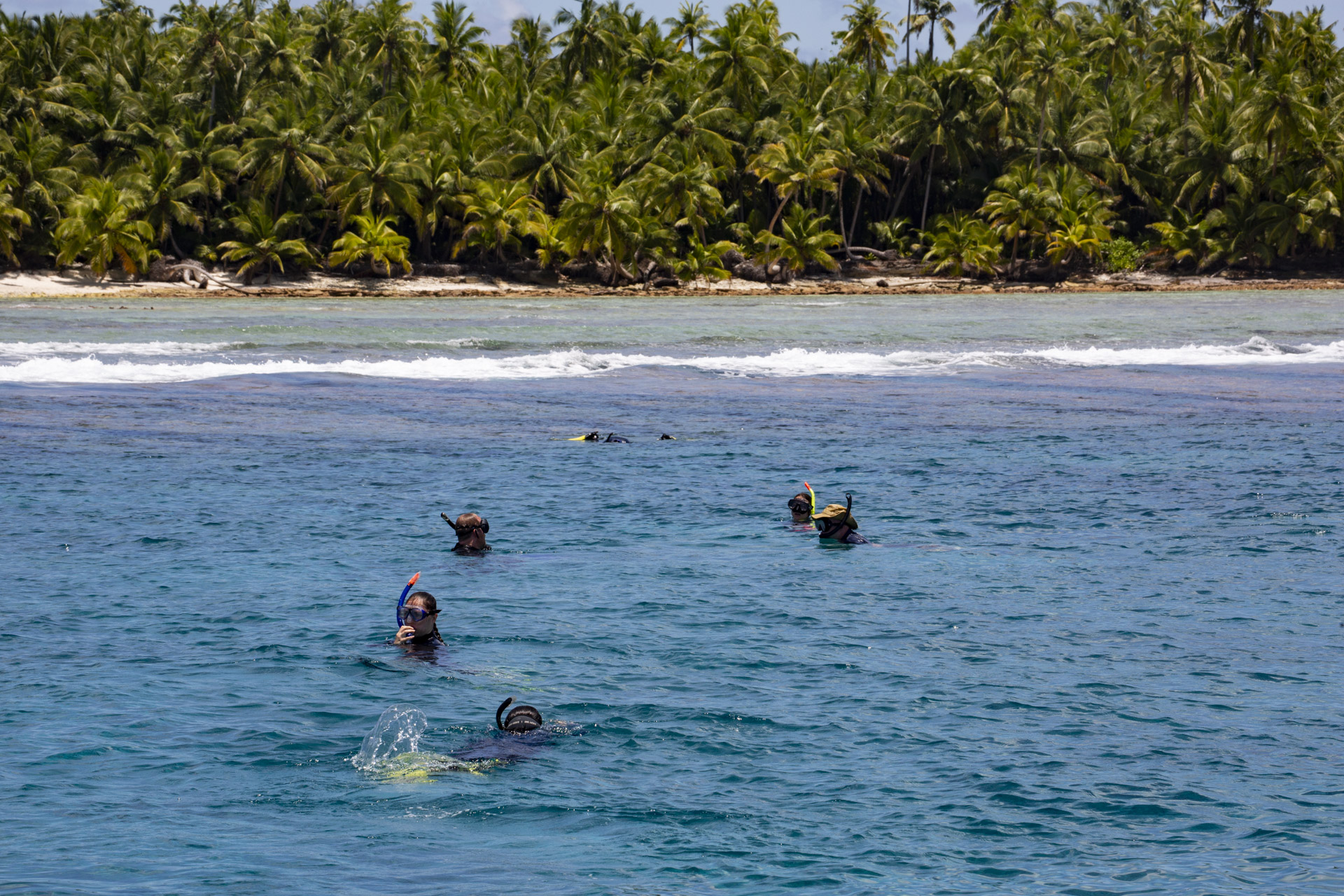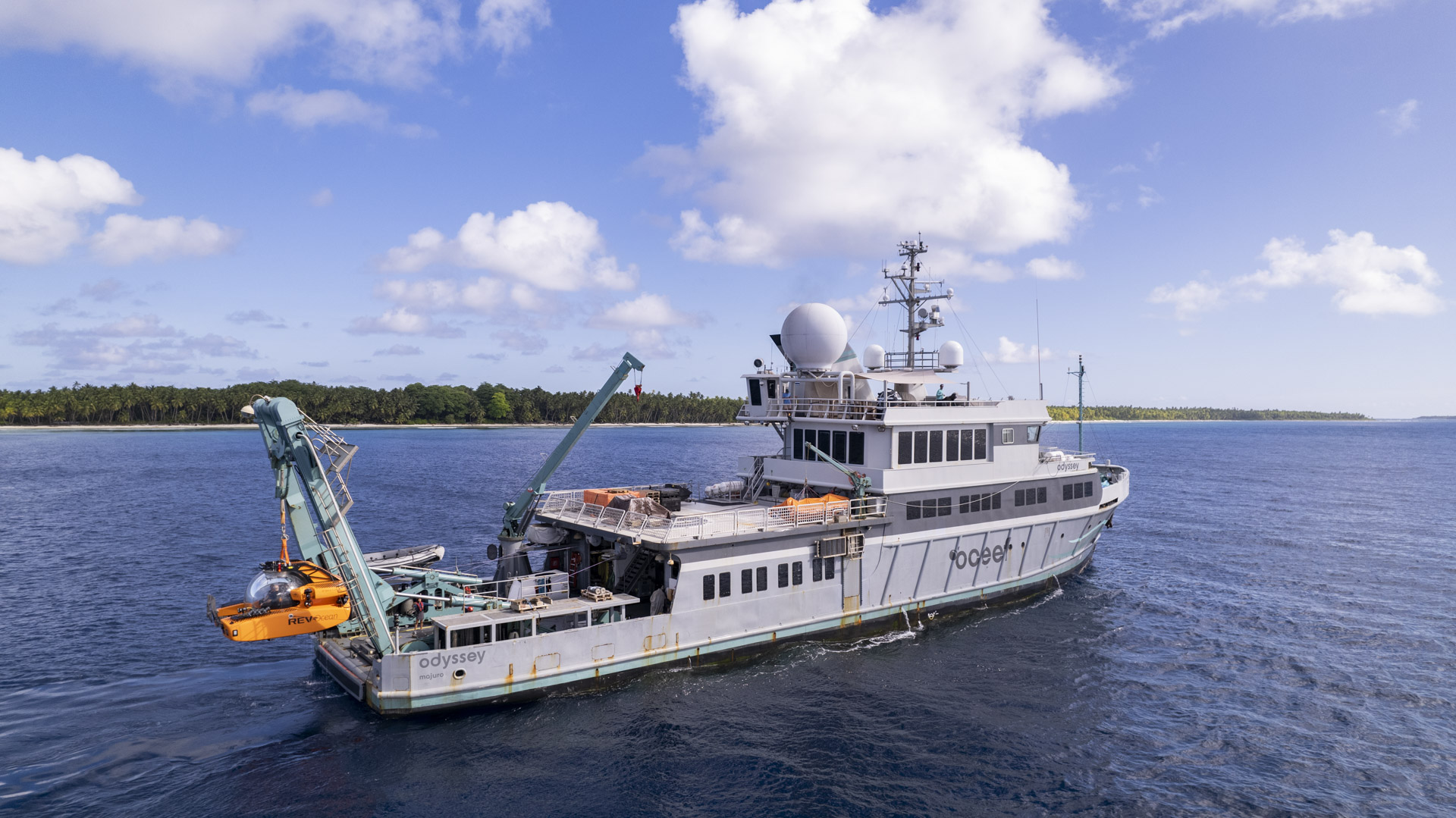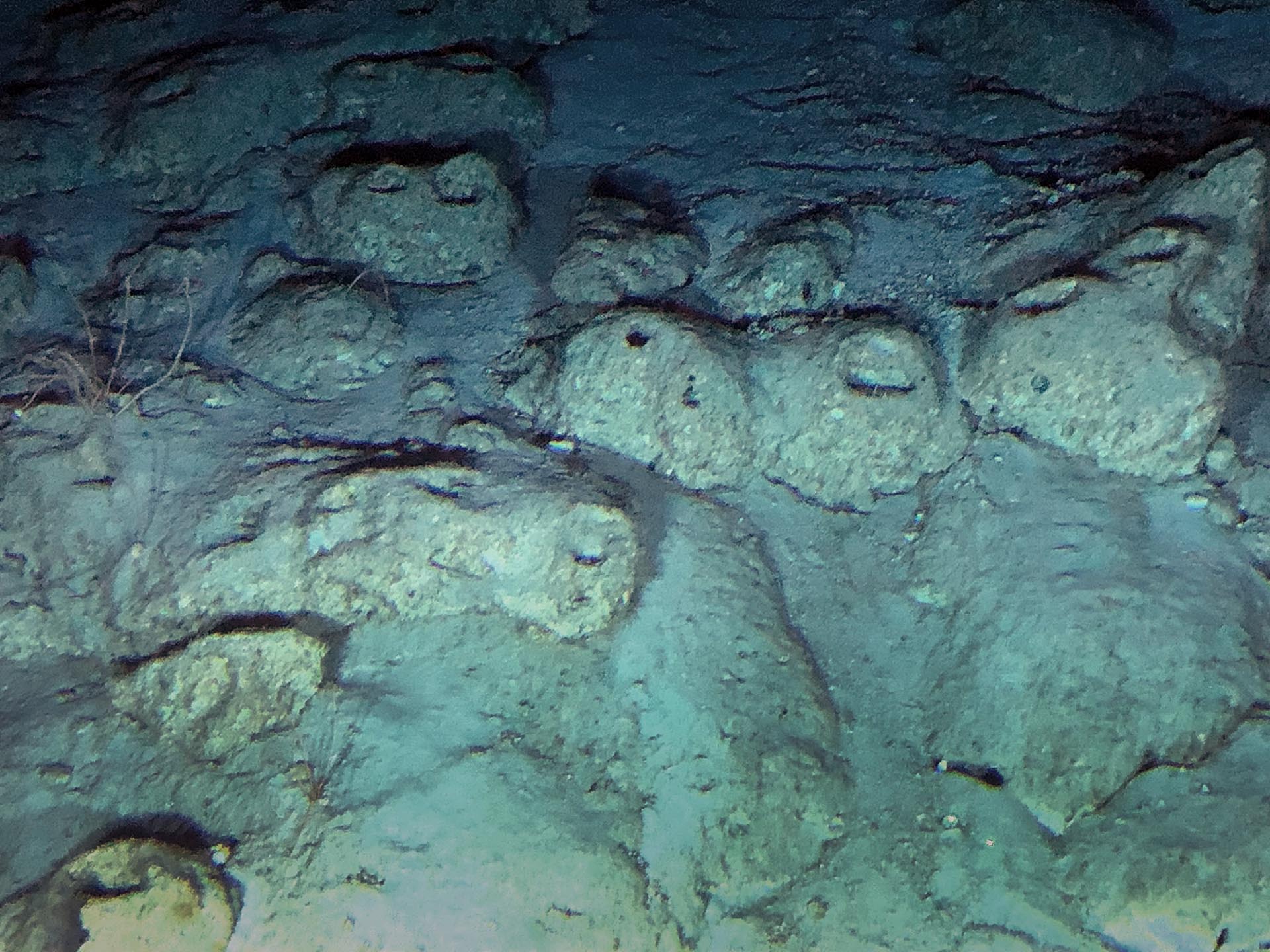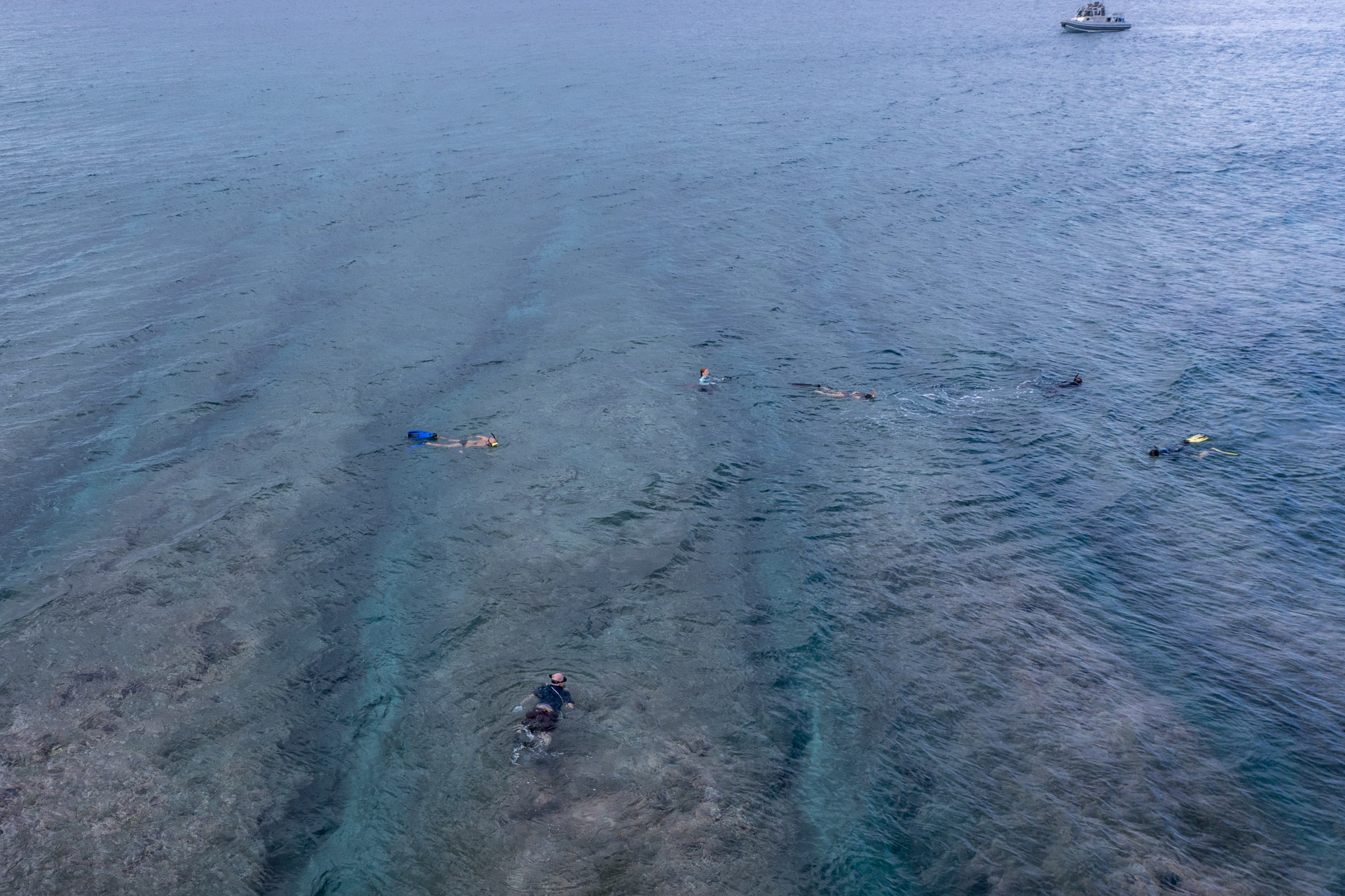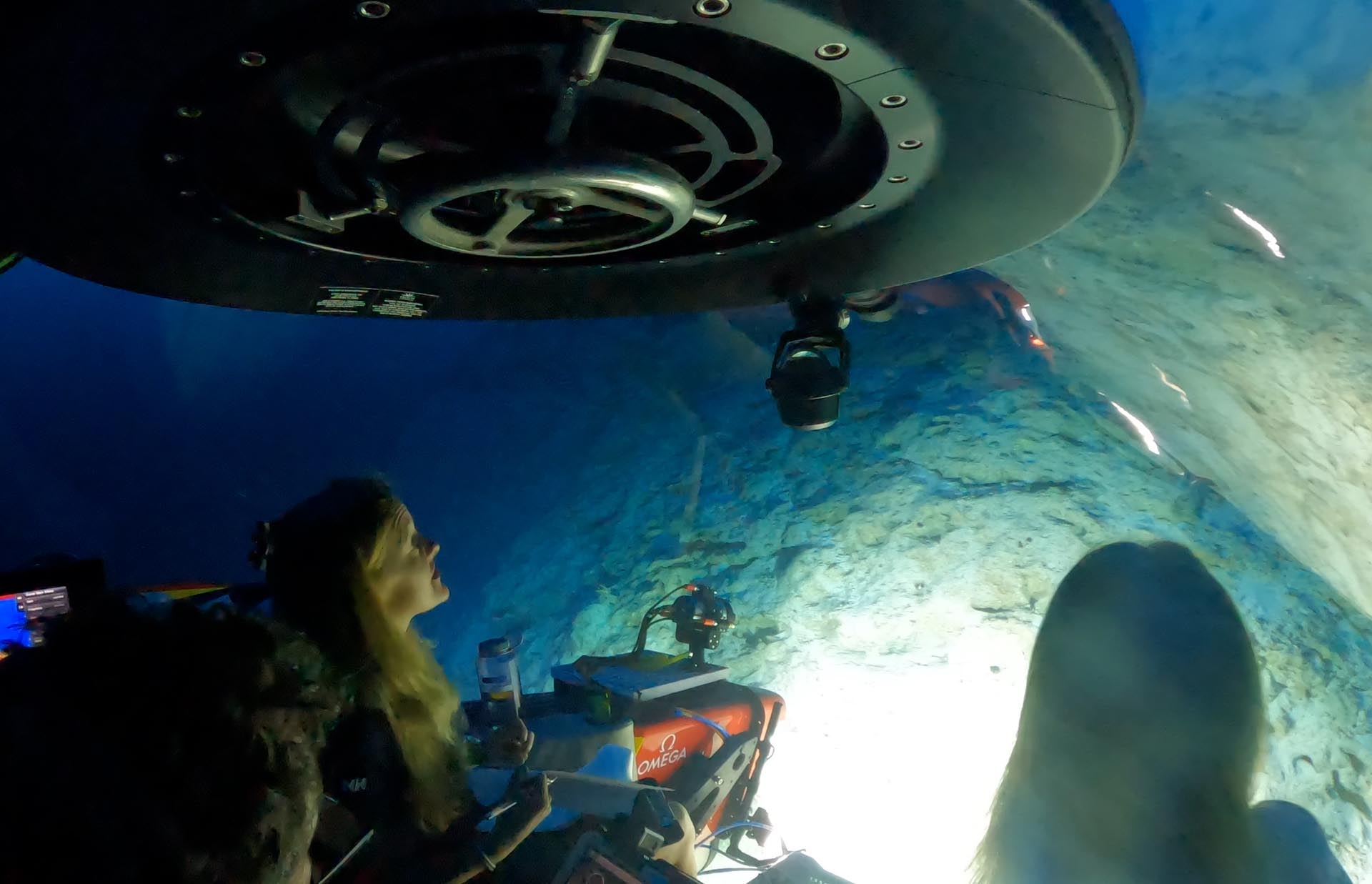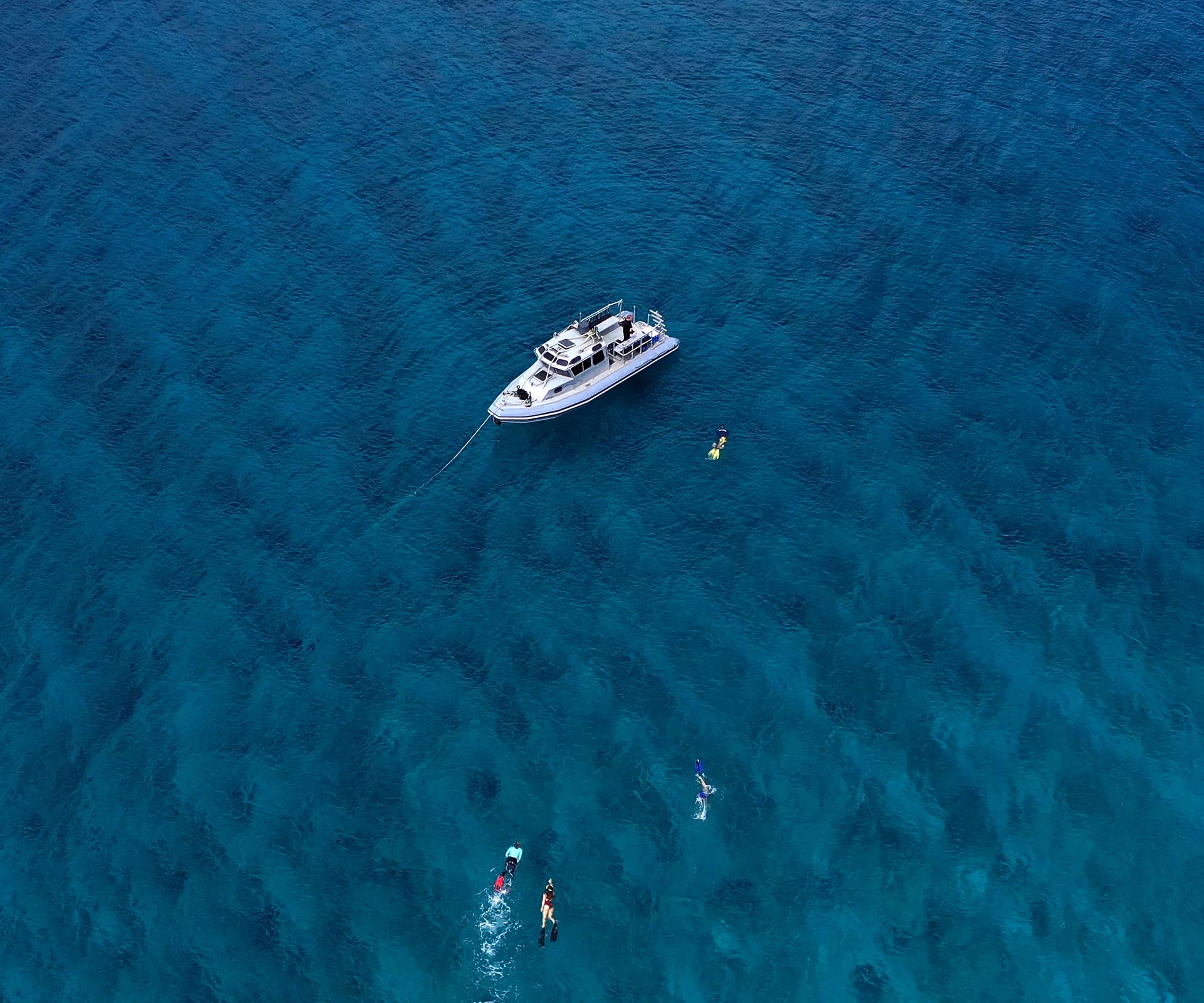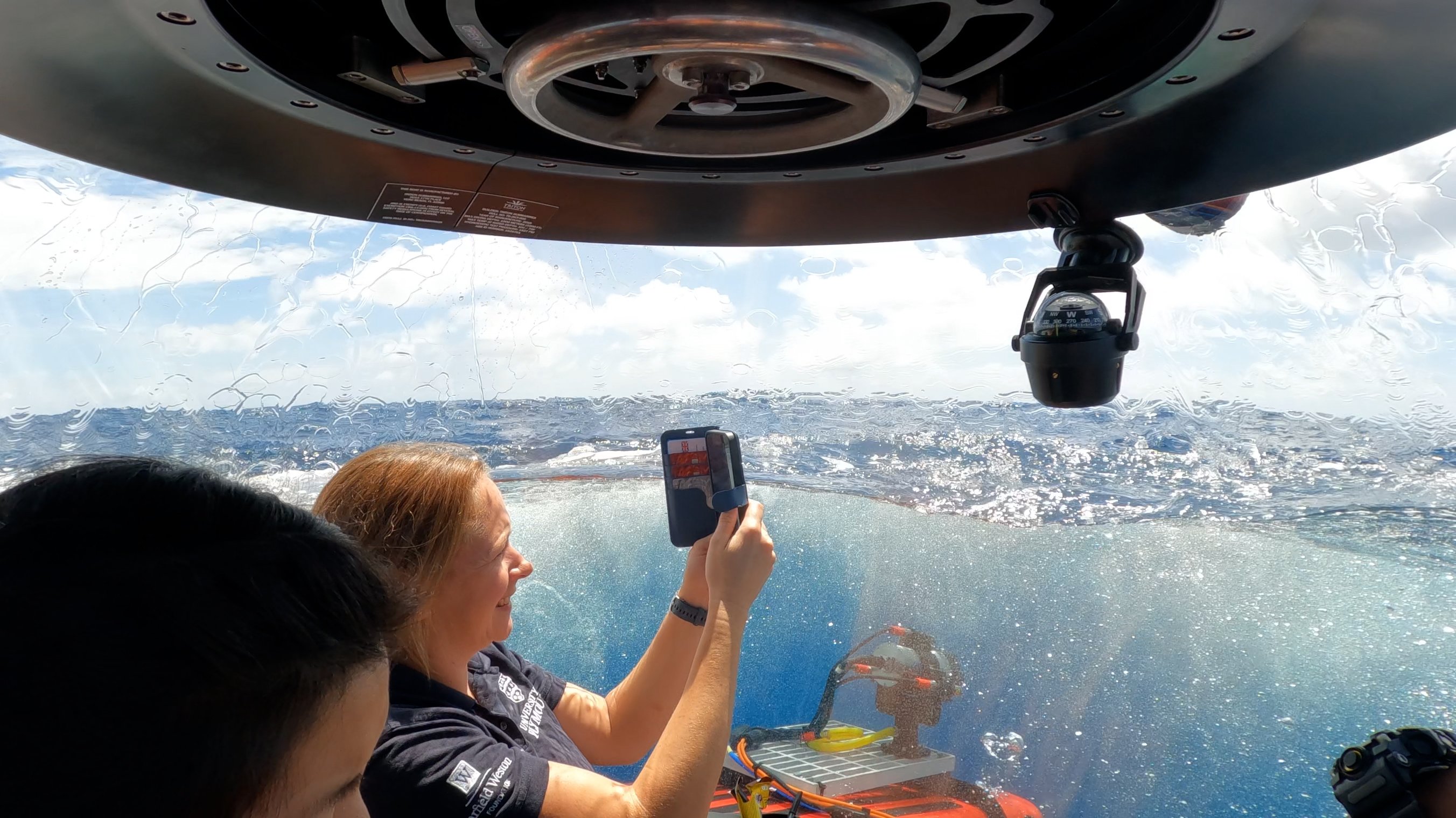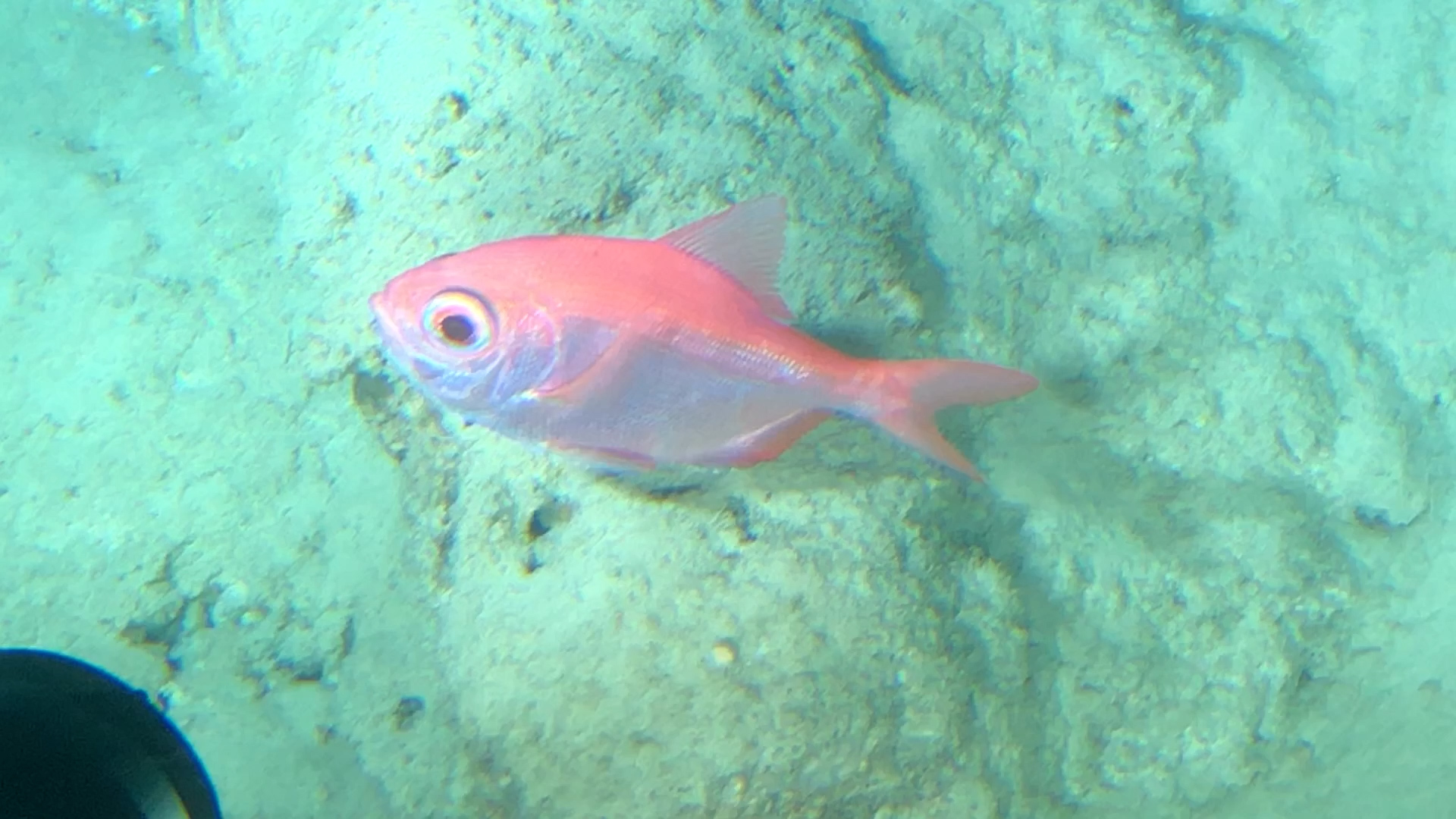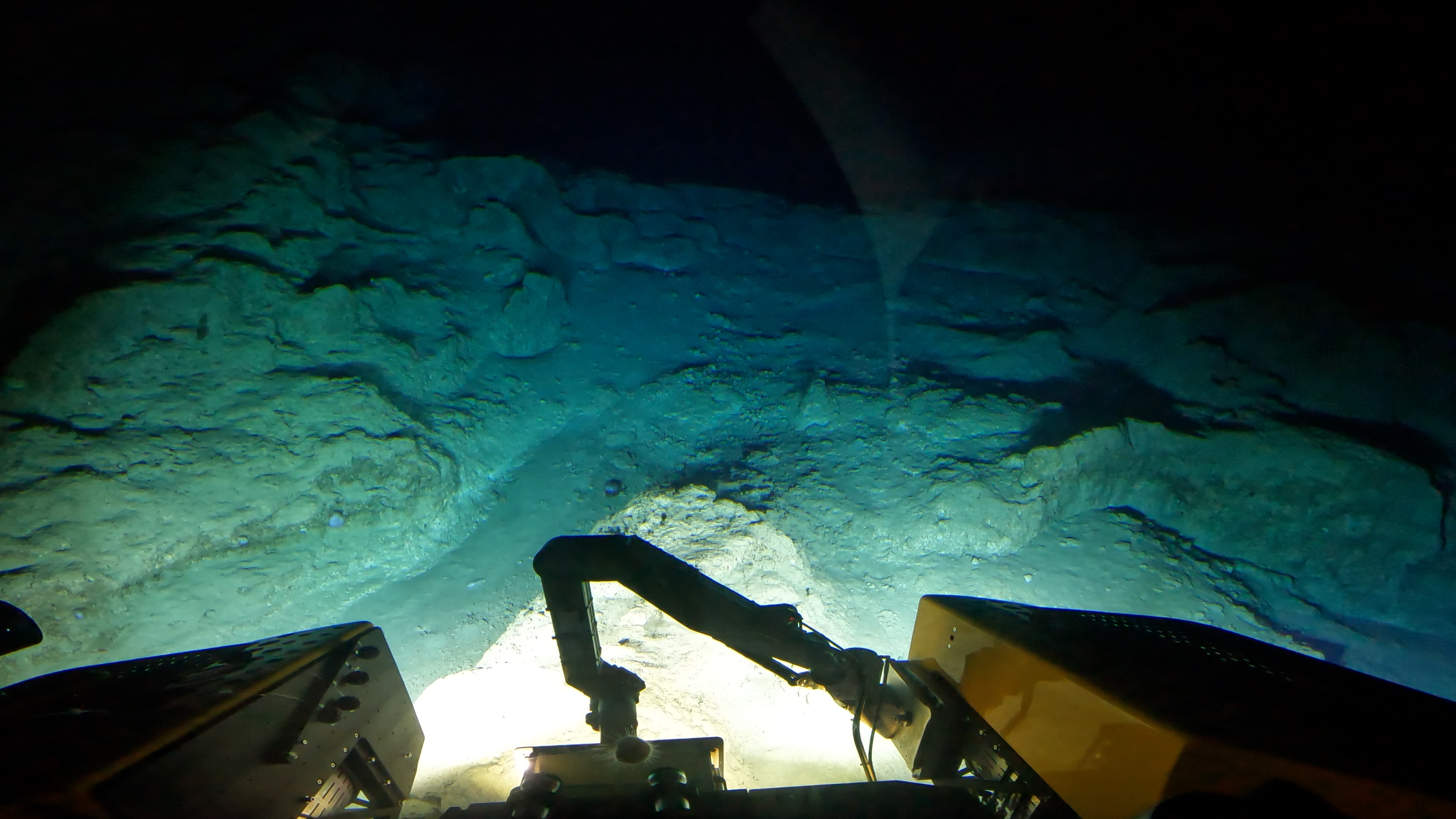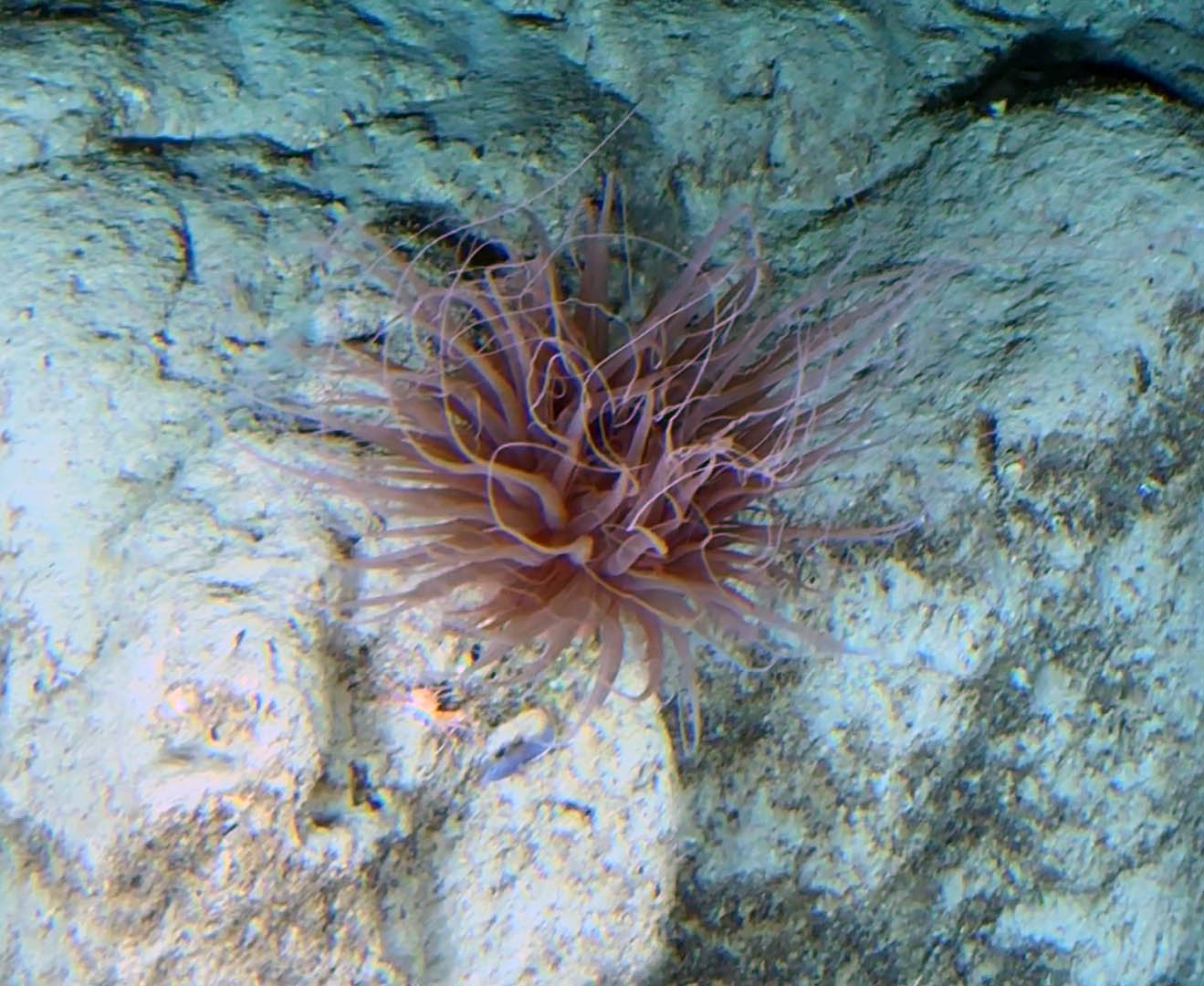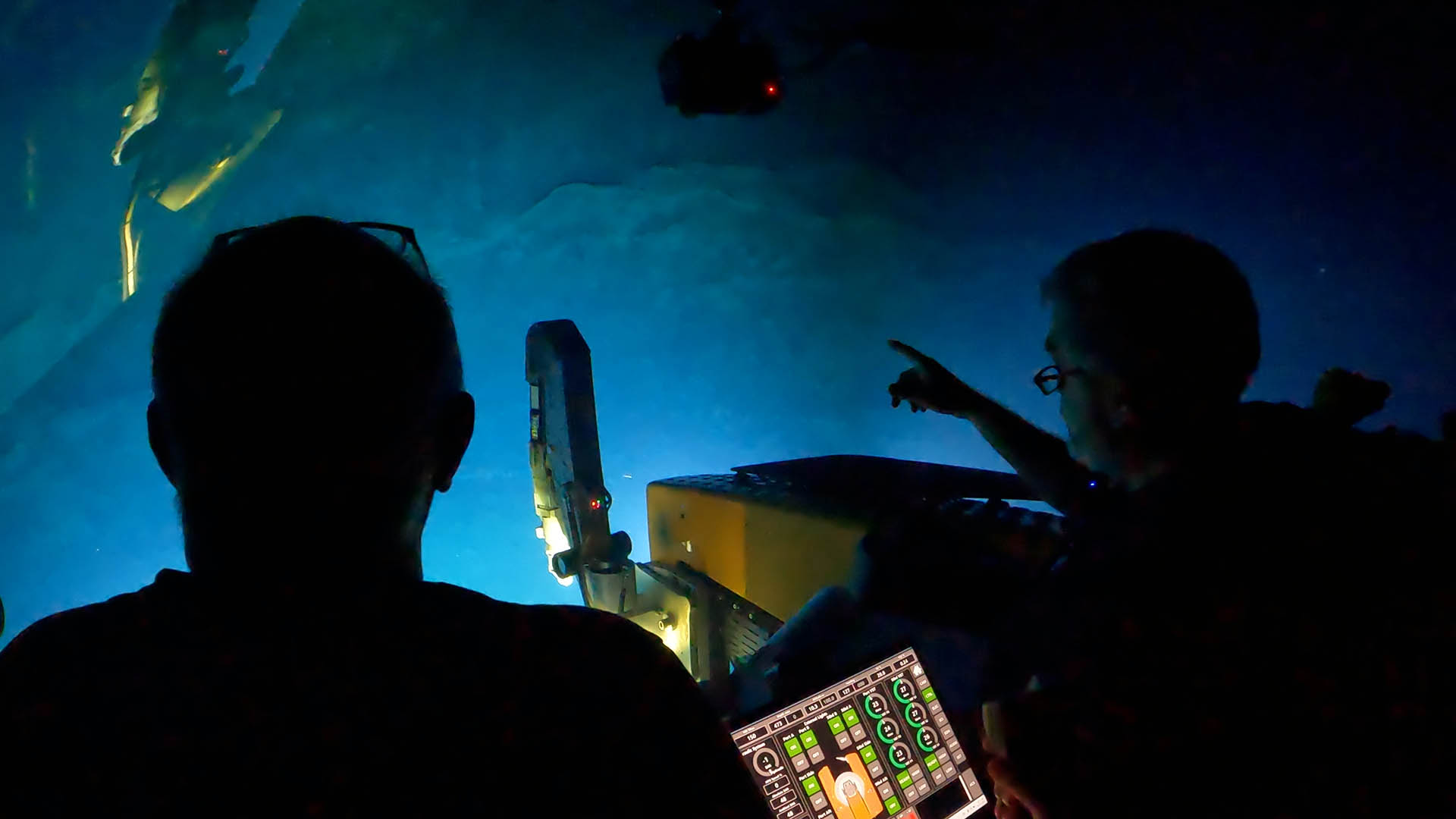REV Ocean and partners explored the depths of the Indian Ocean with the world’s
deepest diving three-person submersible, DSV Aurelia
Chagos 2022 mission kicks off
🌊 REV Ocean is excited to announce that together with OCEEF, and with support from Triton Submarines, Teledyne Marine and Nekton, we are leading the first ever #DeepSea science mission to explore the #Chagos Archipelago.
The mission is led by our chief scientist Prof. Alex Rogers and includes scientists from University of Oxford, University of Plymouth and Bangor University.
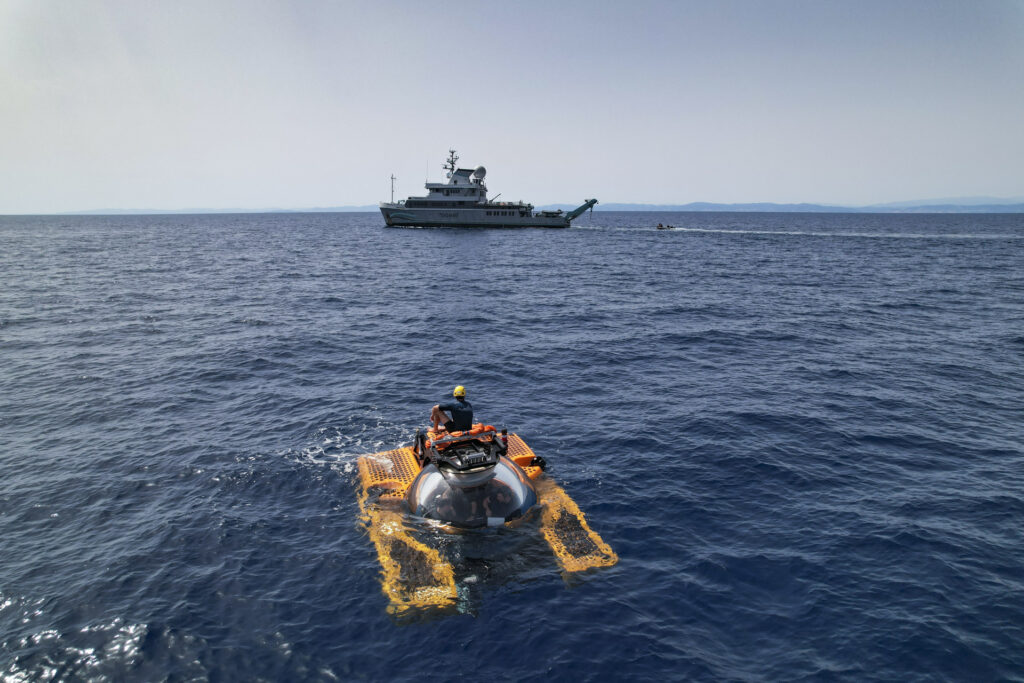
Arrival in Male, Maldives
A new adventure is on the horizon! 🌅
This October we’ll be bringing you updates from our mission in the Chagos Archipelago.
The team is starting to arrive in Male and mobilise all science equipment and supplies on RV Odyssey.
The mission will provide extensive information to help manage the local #MPA and ensure the ocean continues to protect and provide for the wider Indian Ocean region.
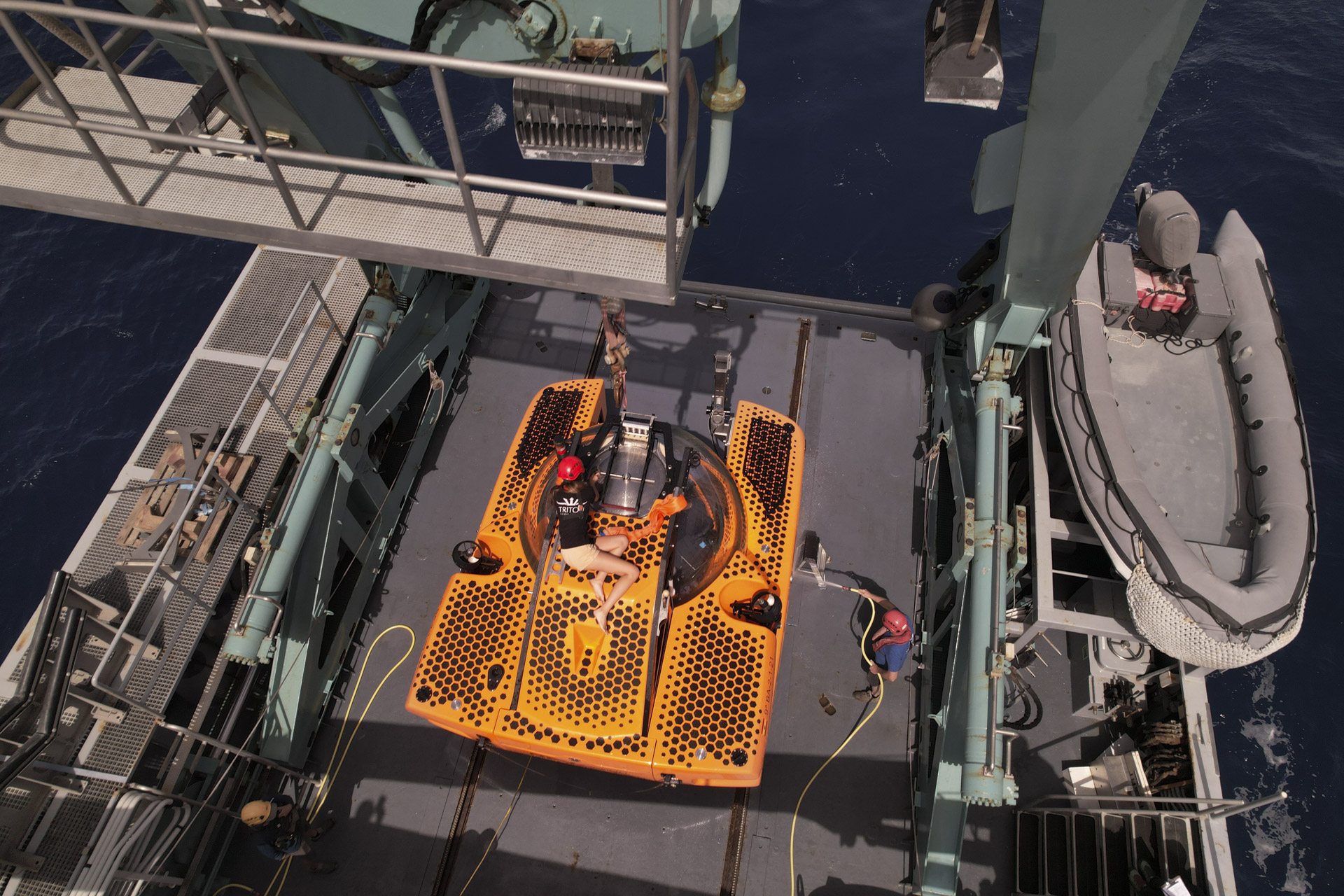
⌛ 1 day until mission takeover!
Today, we spent time testing equipment, calibrating cameras and doing some shallow water snorkelling around Malé. Lots of beautiful reef fish and stingrays all along the coastline. 
The whole science team is busy preparing for the mission, and we are just waiting for the last shipment of equipment to come on board.
It will be two days of transit time until we get to Chagos, but we hope to see many interesting things along the way.
Mobilising the ship
Today was a busy day mobilising equipment on the ship, and troubleshooting any lingering technical issues ahead of the mission.
Looking more closely at the regional charts is getting the team excited for the coming transit to Chagos.
Transit to Chagos (2 days)
And we're off. After some delays mobilising in the Maldives we are finally en-route to the Chagos Archipelago. During the transit, we'll be busy looking for marine life and calibrating the science and film equipment onboard. Feels great to finally be at sea!
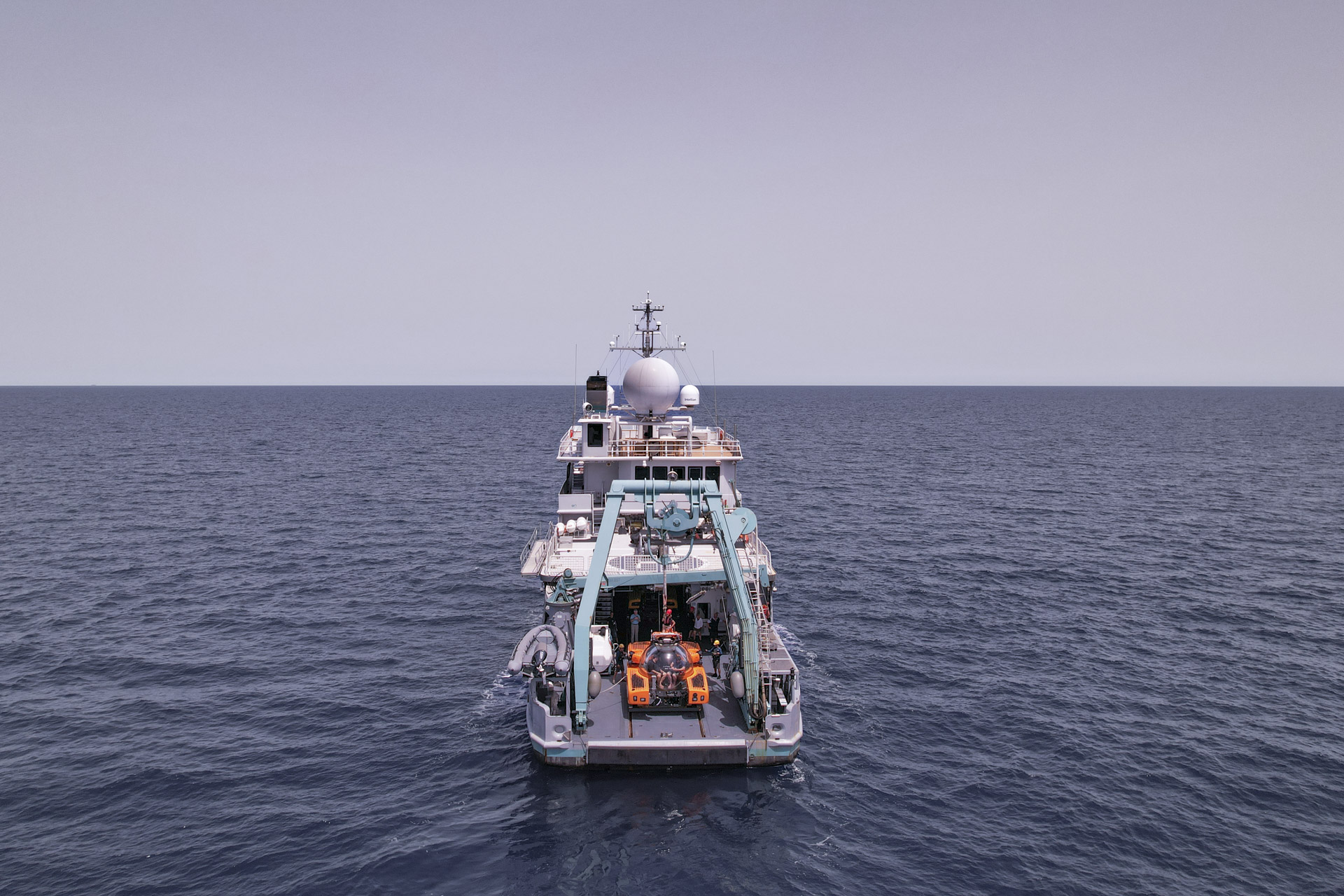
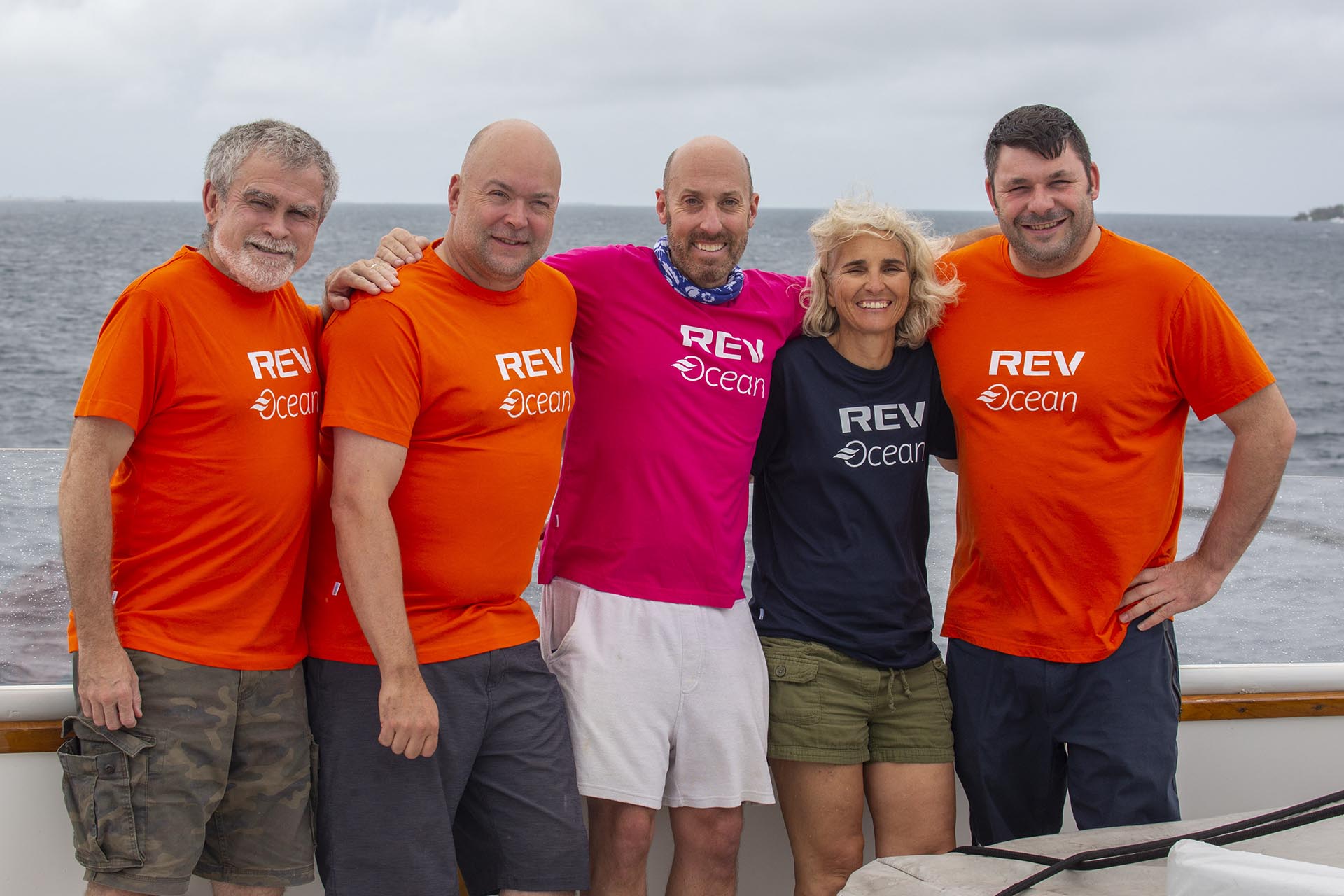
Arrival at Peros Banhos
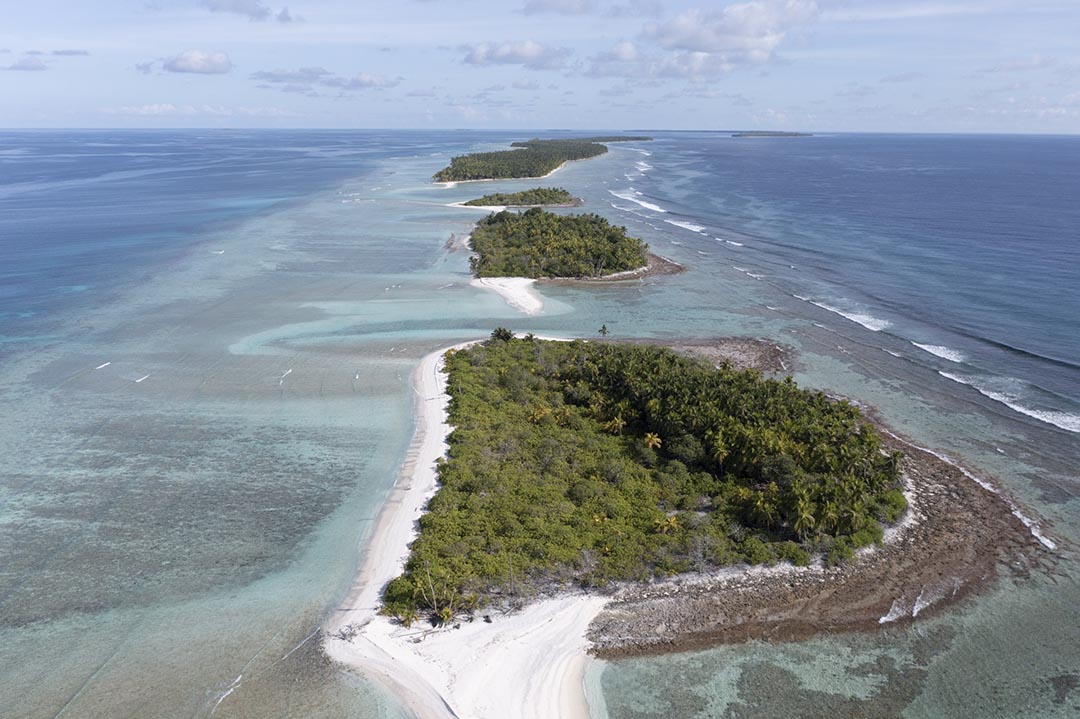
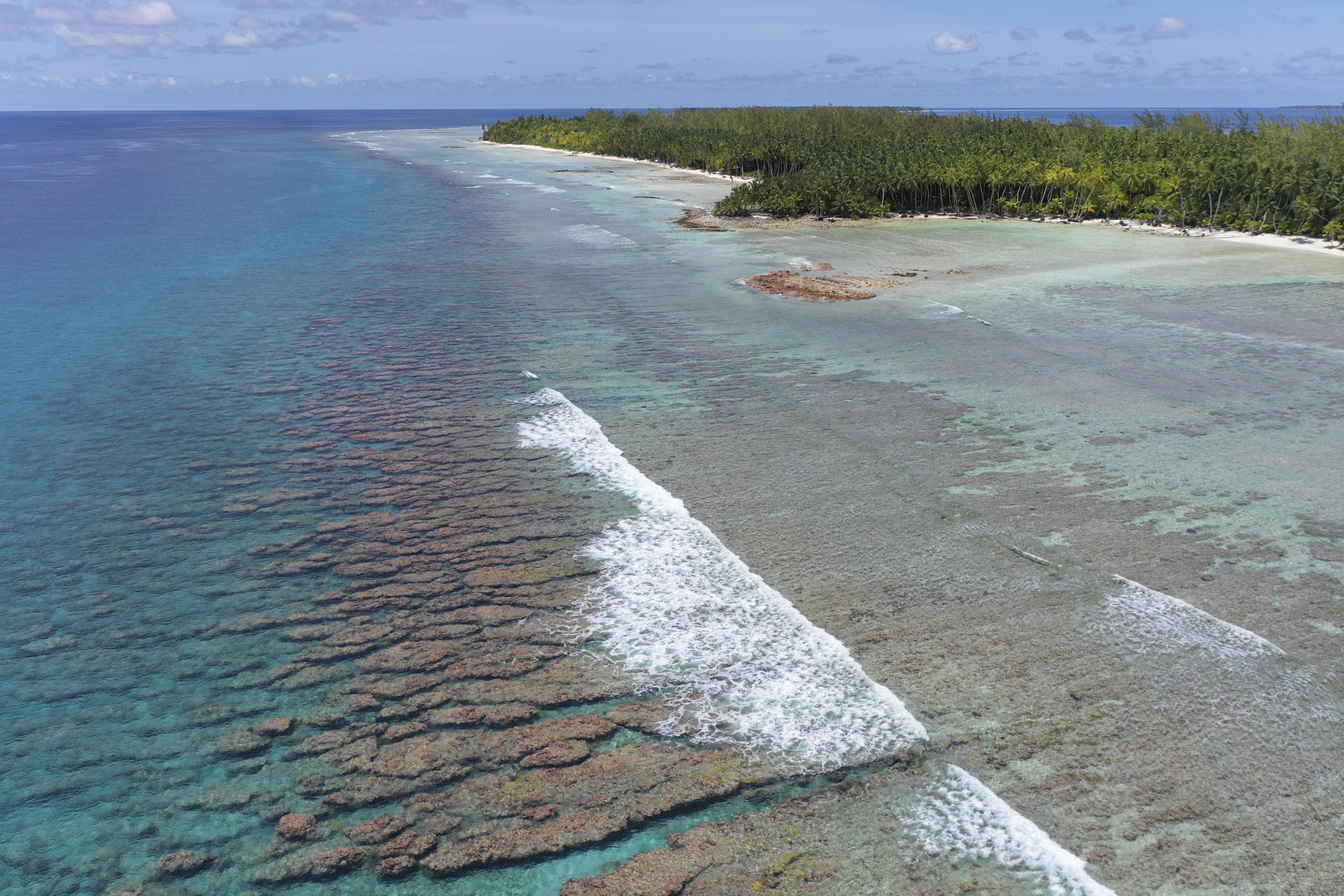
Oct 15
Peros Banhos Day 1
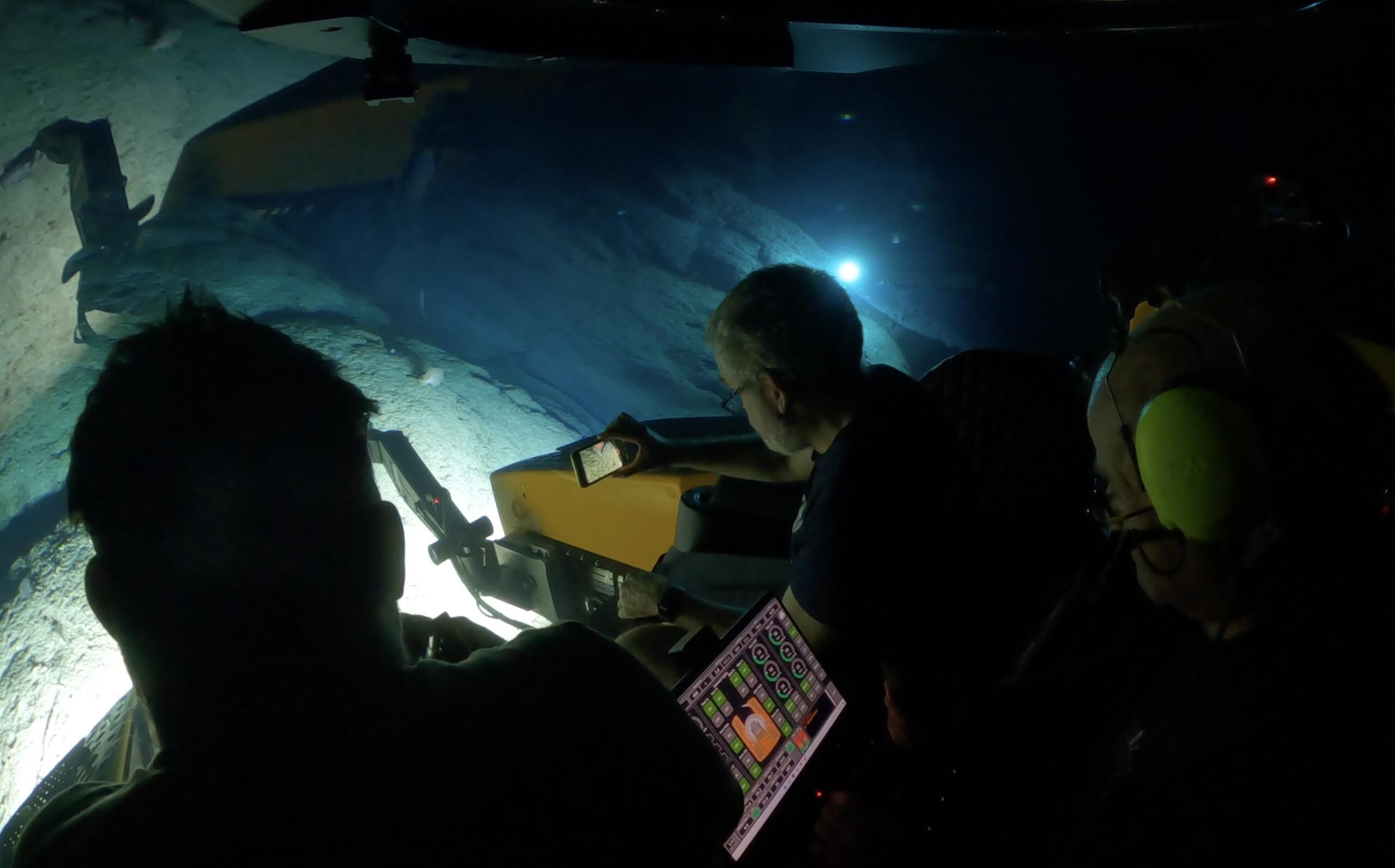
We conducted 3 transects at 500m depth and got some great images from the stereo forward and downward-facing cameras.
Samples Collected
23 animals, including shrimps, corals, and seaweeds. 3eDNA samples were taken at 500m depth with Niskins; filtered and preserved in 100% ethanol. 90 algal samples were also taken by the snorkelling team.
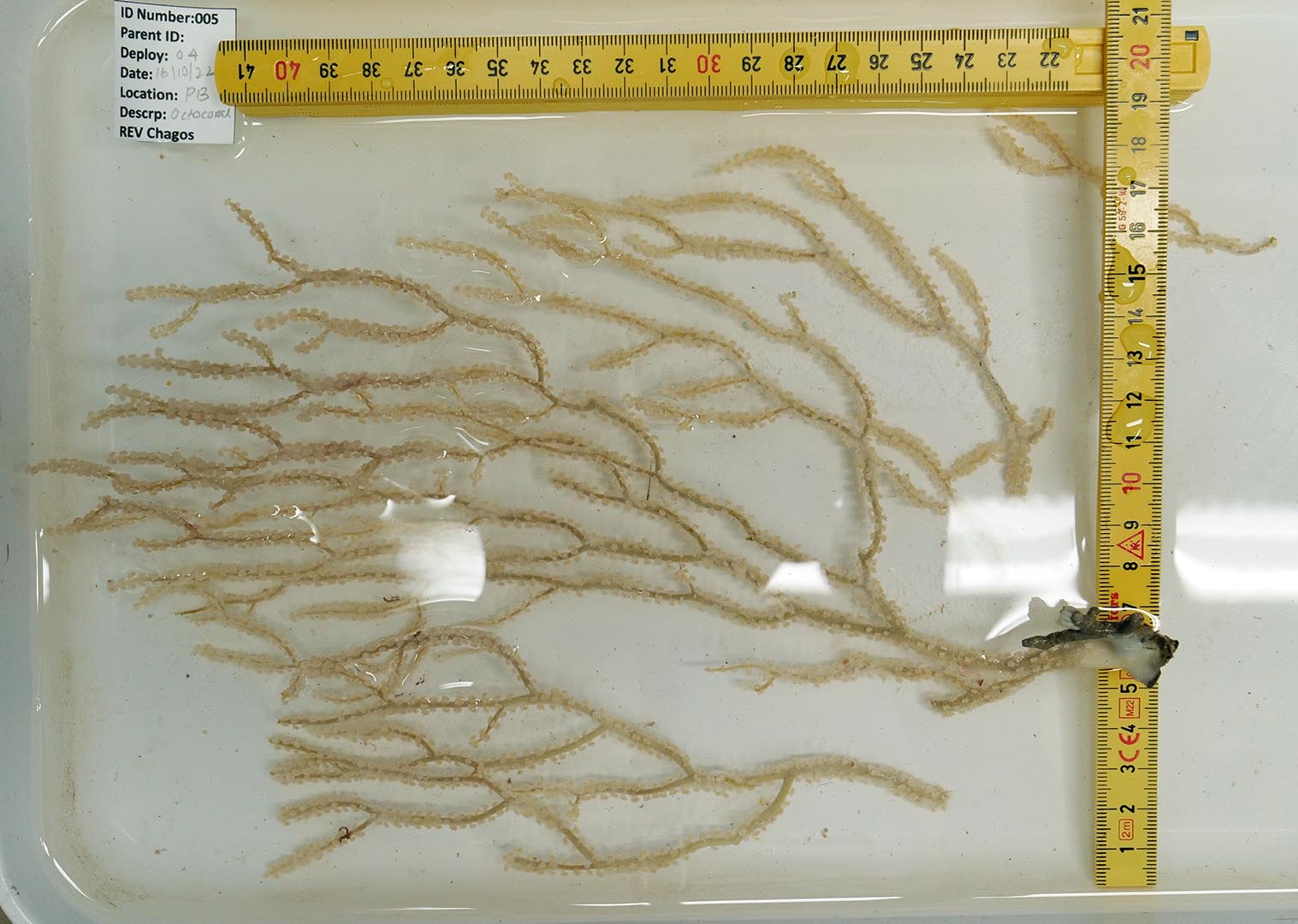
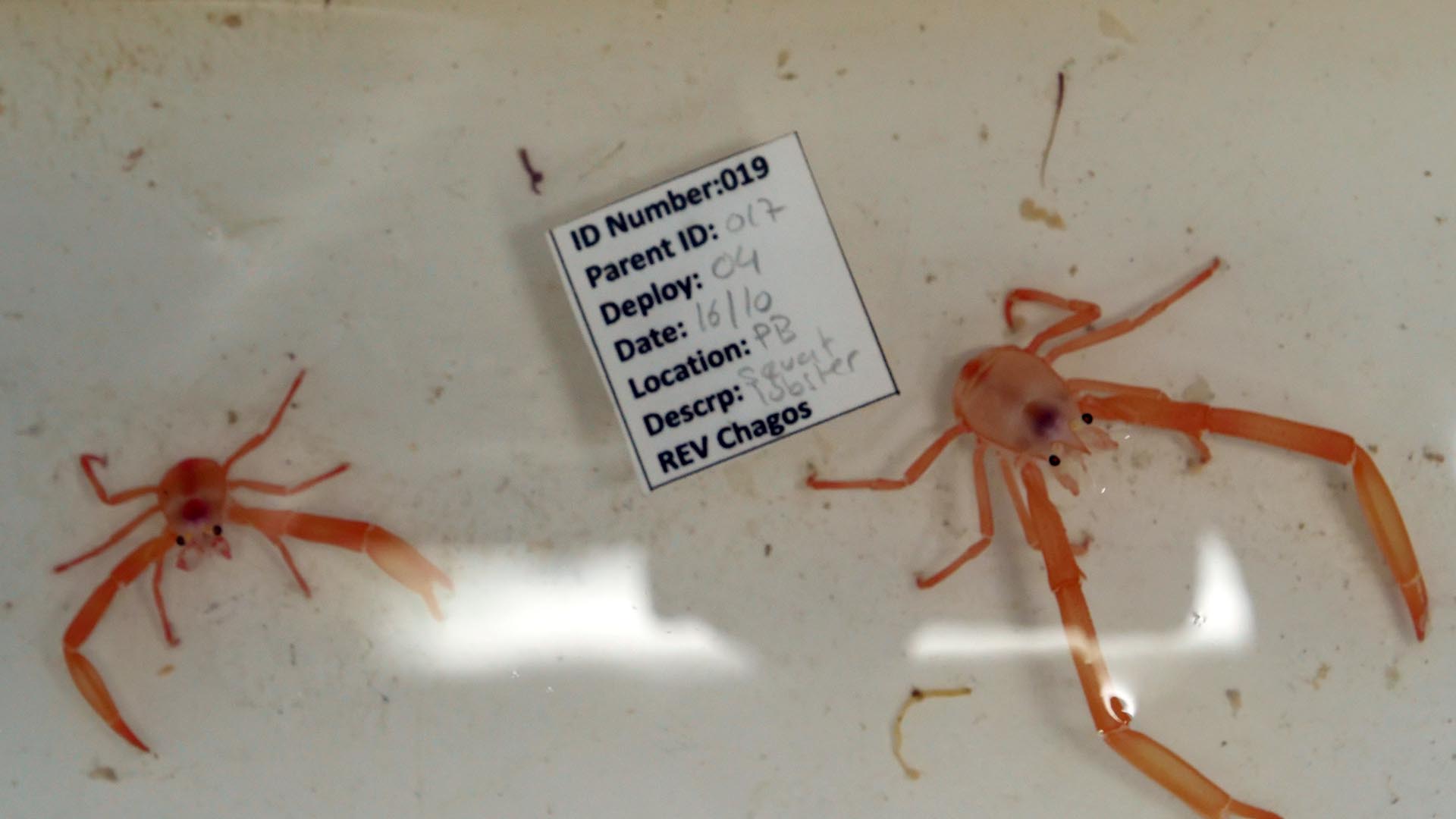
Peros Banhos Day 2
Today video transects were completed at 250m, 120m, and 60m depths (250m length for each).
At 60m the seafloor was covered in sand with patches of hard ground, large colonies of Ellisella (whip corals) and robust Tubastrea colonies along with extensive dark brown ascidian.
Shallow snorkel surveys ( 1-5 M) were also undertaken, and the team collected algal samples many quite small in size, which might be the result of heavy grazing by local fish. The diversity of seaweeds was quite high in this location.
Peros Banhos Day 3
The team dove Aurelia and took samples off the coast of Ile Pierre at 250, 120, and 60 m Samples included benthic ctenophores, sea whips, cold-water coral, plate coral, green algae), Niskins deployed (2x120m, 2x60m).
At 250m the terrain was largely fine sediment with a scattering of extremely large
boulders (some the size of the submersible or larger). At times sediment was draped
thinly on calcareous bedrock and a small area of irregular low-lying chimneys with
depressions in the top were observed (later dubbed “alien eggs).
A team swam snorkel surveys along the coast of Petite Soeur, in search for Ctenella, and algal samples.
Eagle Island Day 1
Today was busy sampling (plate coral, algae, cold water coral, common fauna), off Eagle Island, at depths of 250, 120, and 60 m. Niskin bottles were deployed at 250 and 120 m. In the sub: Nicola Foster, Kelvin Magee, Nils Baadnes.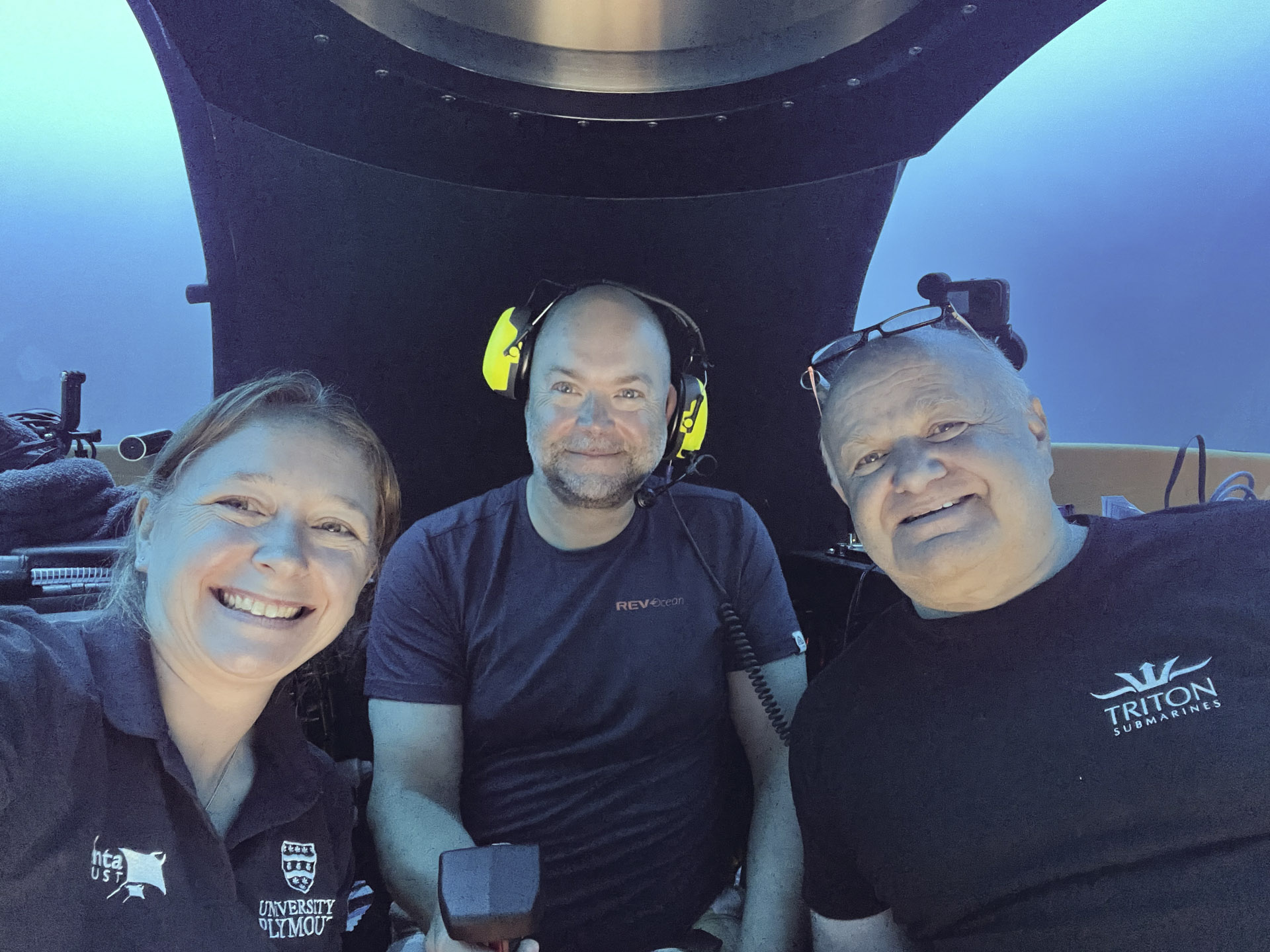
A snorkel team swam 60m transects along the coast of Eagle Island at the bottom of a rocky ledge which had a high abundance and diversity of coral and fish species.
Eagle Island Day 2
Aurelia and Omega worked in tandem offshore Eagle Island today. They made 3x transects at 500 m, sampled and recorded cold-water coral reefs and other species.
Aurelia also sampled 3x water niskins at 500 m depth.
Eagle Island Day 3
Today, Aurelia was busy sampling offshore Eagle Island at depths of 250, 120, and 60 m. We sampled various chimneys, conspicuous biota and deep-sea algae.
Transects were done at lengths of 250 m, @ 120 m (2x) and 60 m. 

Eagle Island Day 4
Due to high sea state at Pitt Bank, we returned to Eagle Island to continue surveys and sampling at 500 m.
Initial findings around Eagle Island include the discovery of cold-water coral habitats, the discovery of carbonate chimney structures and new evidence for a 'trapping zone' of the deep-scattering layer (DSL) against the seafloor and its importance as a food source for demersal fish and other organisms.
This short cruise was super productive but we feel we got just a superficial overview of biological communities down to upper-bathyal depths (500m) along with their biodiversity and functional ecology. We hope to come back again and spend more time exploring the depths of the Chagos Archipelago.
Oct 22
